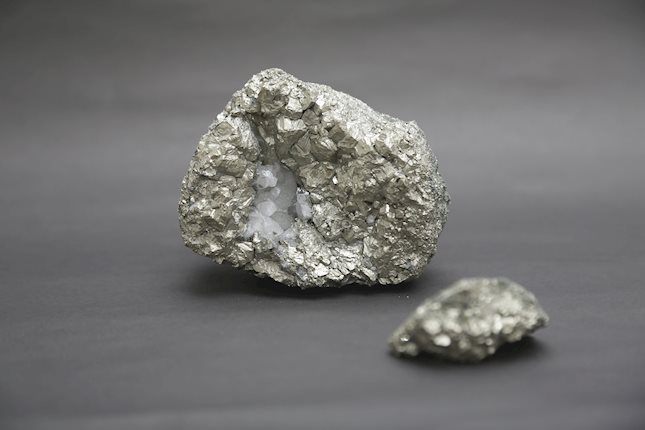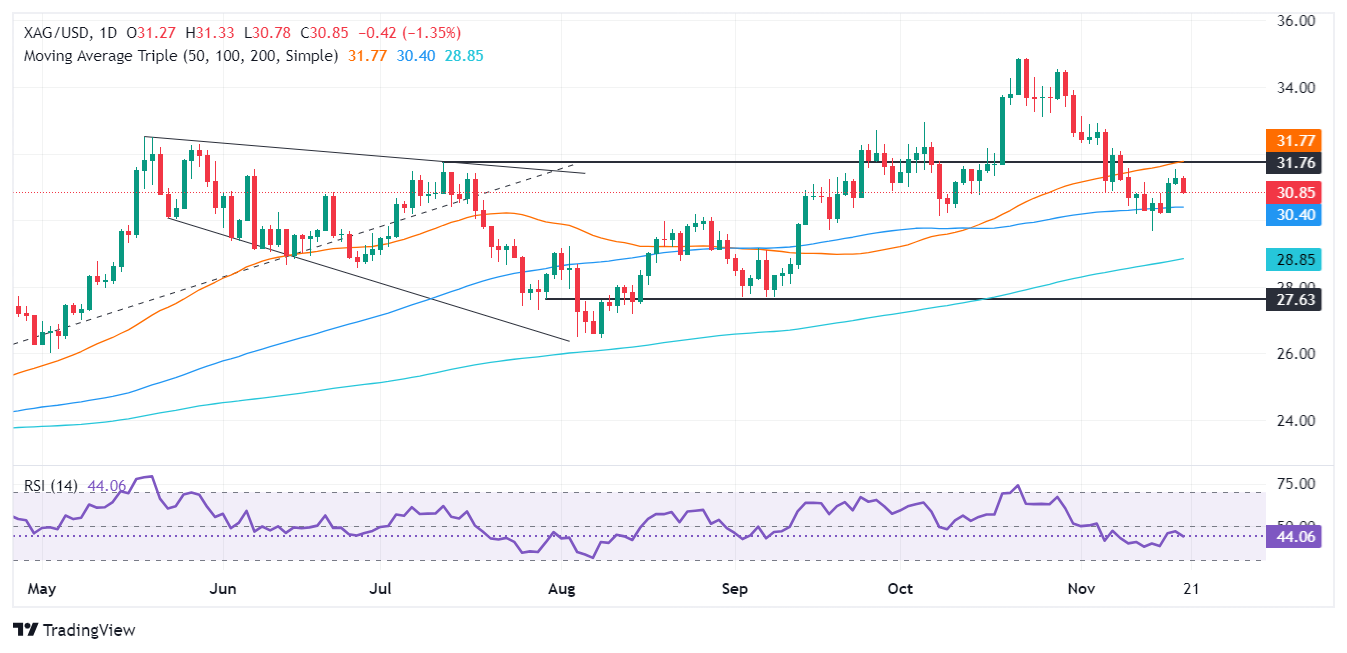- Silver retreats over 1.14% as traders shift focus to the Greenback, though remains up 1.90% for the week.
- Technicals indicate a bearish trend with potential support at $30.00 after breaking below the 100-day SMA.
- RSI trends suggest bearish momentum is increasing, indicating possible further declines in silver prices.
Silver's price retreats over 1.14% on Wednesday, yet it remains up 1.90% in the week as traders ditch the grey metal in favor of the Greenback. At the time of writing, XAG/USD trades at $30.82 a troy ounce, beneath the $31.00 psychological mark.
XAG/USD Price Forecast: Technical outlook
The non-yielding metal trades within the $30.38-$31.75 range, guarded by the 100- and 50-day Simple Moving Averages (SMAs), respectively. Despite being range-bound, the XAG/USD is downward biased in the short term as the precious metal achieves successive series of lower highs and lower lows.
Once sellers push XAG/USD below the 100-day SMA, a bearish resumption will occur. If cleared, the next support would be $30.00 a troy ounce, followed by the November 14 swing low of $29.68 and the 200-day SMA at $28.88.
If buyers moved in and pushed XAG/USD above $31.00, the 50-day SMA would be next, ahead of the $32.00 figure.
Indicators such as the Relative Strength Index (RSI) hint that bears continue to gather steam. Therefore, further XAG/USD downside is expected.
XAG/USD Price Chart – Daily
Silver FAQs
Silver is a precious metal highly traded among investors. It has been historically used as a store of value and a medium of exchange. Although less popular than Gold, traders may turn to Silver to diversify their investment portfolio, for its intrinsic value or as a potential hedge during high-inflation periods. Investors can buy physical Silver, in coins or in bars, or trade it through vehicles such as Exchange Traded Funds, which track its price on international markets.
Silver prices can move due to a wide range of factors. Geopolitical instability or fears of a deep recession can make Silver price escalate due to its safe-haven status, although to a lesser extent than Gold's. As a yieldless asset, Silver tends to rise with lower interest rates. Its moves also depend on how the US Dollar (USD) behaves as the asset is priced in dollars (XAG/USD). A strong Dollar tends to keep the price of Silver at bay, whereas a weaker Dollar is likely to propel prices up. Other factors such as investment demand, mining supply – Silver is much more abundant than Gold – and recycling rates can also affect prices.
Silver is widely used in industry, particularly in sectors such as electronics or solar energy, as it has one of the highest electric conductivity of all metals – more than Copper and Gold. A surge in demand can increase prices, while a decline tends to lower them. Dynamics in the US, Chinese and Indian economies can also contribute to price swings: for the US and particularly China, their big industrial sectors use Silver in various processes; in India, consumers’ demand for the precious metal for jewellery also plays a key role in setting prices.
Silver prices tend to follow Gold's moves. When Gold prices rise, Silver typically follows suit, as their status as safe-haven assets is similar. The Gold/Silver ratio, which shows the number of ounces of Silver needed to equal the value of one ounce of Gold, may help to determine the relative valuation between both metals. Some investors may consider a high ratio as an indicator that Silver is undervalued, or Gold is overvalued. On the contrary, a low ratio might suggest that Gold is undervalued relative to Silver.

 20-11-2024
20-11-2024

